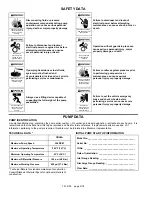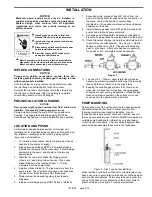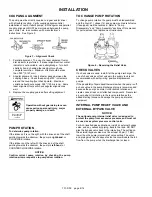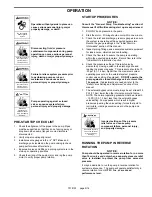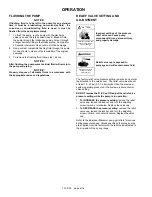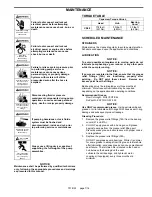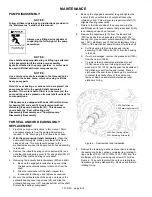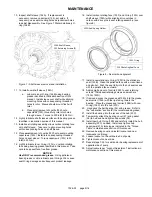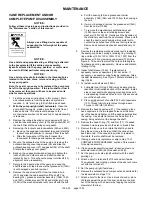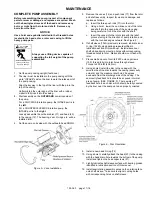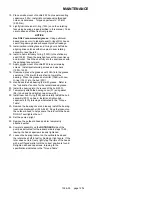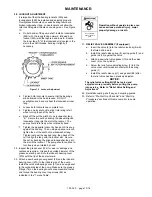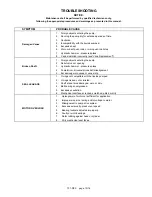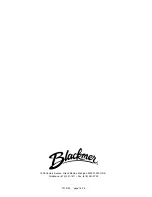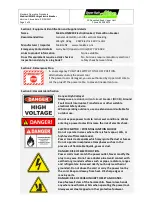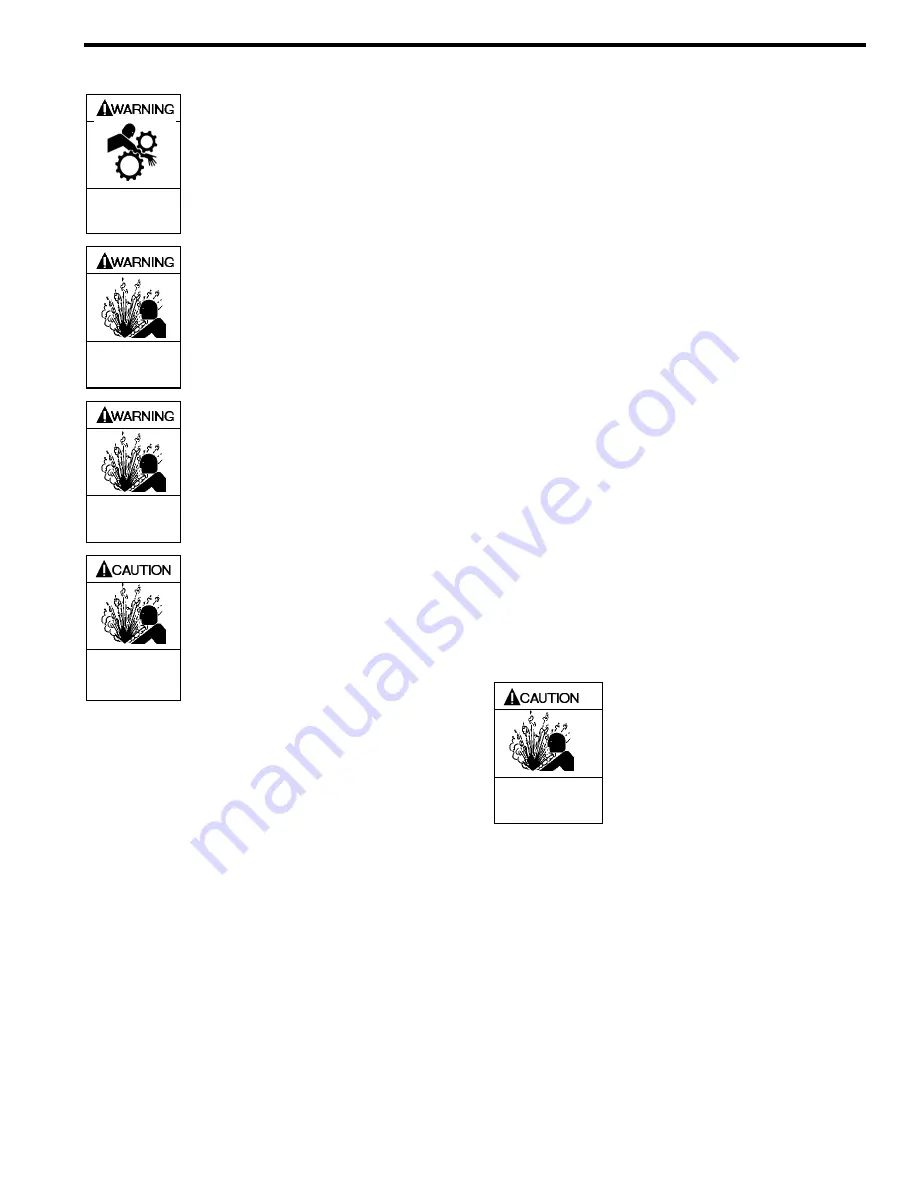
701-D00 page 5/16
OPERATION
Operation without guards in place can
cause serious personal injury, major
property damage, or death.
Do not operate
without guard
in place
Disconnecting fluid or pressure
containment components during pump
operation can cause serious personal
injury, death or major property damage
Hazardous pressure
can cause serious
personal injury or
property damage
Failure to relieve system pressure prior
to performing pump service or
maintenance can cause serious
personal injury or property damage.
Hazardous pressure
can cause serious
personal injury or
property damage
Pumps operating against a closed
valve can cause system failure,
personal injury and property damage
Hazardous
pressure can
cause personal
injury or property
damage
PRE-STARTUP CHECK LIST
1. Check the alignment of the pipes to the pump. Pipes
must be supported so that they do not spring away or
drop down when pump flanges or union joints are
disconnected.
2. Verify proper coupling alignment.
3. Install pressure gauges in the
1
/
4
" NPT intake and
discharge ports located on the pump casing to check
pump performance after start-up.
4. Ensure all valves and fittings in piping system are in the
start-up or operating positions.
5. Check the wiring of the pump motor and jog the pump
motor to verify proper pump rotation.
STARTUP PROCEDURES
NOTICE:
Consult the "General Pump Troubleshooting" section of
this manual if difficulties during start up are experienced.
1. SLOWLY build pressure in the pump.
2. Start the motor. Priming should occur within one minute.
3. Check the inlet and discharge pressure gauges to ensure
the system is operating within expected parameters.
Record the gauge readings in the "Initial Start Up
Information" section of this manual.
4. Inspect piping, fittings, and associated system equipment
for leaks, noise, vibration and overheating.
5. Check the flow rate to ensure the pump is operating
within the expected parameters. Record flow rate in the
“Initial Start Up Information” section.
6. Check the pressure setting of the relief valve by
momentarily closing a valve in the discharge line and
reading the pressure gauge. This pressure should be 10
-20 psi (0.7-1.4 bar) higher than the maximum system
operating pressure, or the external system pressure
control valve setting (if equipped).
DO NOT operate the
pump against a closed discharge valve for more than
15 seconds.
If adjustments are needed, refer to the
"Relief Valve Setting and Adjustment" section of this
manual.
7. The external bypass valve must always be set at least 25
PSI (1.7 bar) lower than the internal pump relief valve.
NOTE: The normal operating pressure must be at least 5
- 15 PSI (0.3 -1.0 bar) less than the external bypass
valve setting. Pump speeds which result in higher
pressures (nearing the valve setting) forces the liquid to
recirculate, creating excessive wear on the pump and
equipment.
Incorrect settings of the pressure
relief valve can cause pump
component failure, personal injury,
and property damage.
Hazardous pressure
can cause personal
injury or property
damage
RUNNING THE PUMP IN REVERSE
ROTATION
NOTICE:
Pump should be operated in reverse rotation for no more
than 10 minutes and only when a separate pressure relief
valve is installed to protect the pump from excessive
pressure.
It may be desirable to run the pump in reverse rotation for
system maintenance. The pump will operate satisfactorily in
reverse rotation for a LIMITED time,
at a reduced
performance level.


